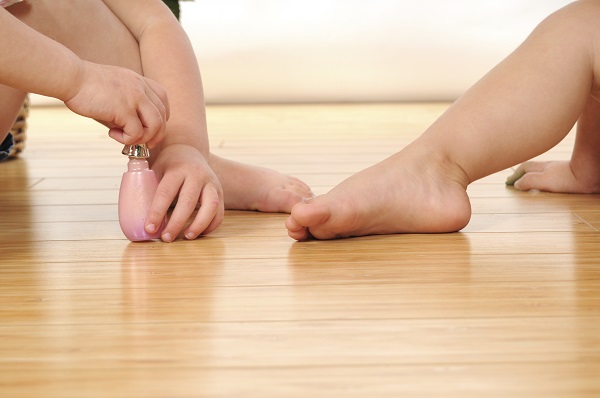With winter’s cold temperatures and wet days, are you experiencing any issues with your hardwood floors?
Have you been noticing popping or crackling sounds coming from your floors?
Even though wood floors are made from “dead” trees, the flooring reacts to temperature and humidity changes inside your home as if it were alive. These cold wet days require us heating our homes to make them comfortable, but a by-product of the warmth is reduced humidity in your home. Low humidity not only dries out your skin and sinuses, but it also causes a build-up of static electricity in your home. Aren’t you tired of getting shocked when you touch different surfaces in your home? Just as low humidity affects us, it also affects wood flooring.
It doesn’t matter if your wood floors are solid wood, engineered wood, or laminate. Wood flooring manufacturers specify that wood floors perform to their specifications when installed in a heat and humidity controlled environment. This means that, in order for the wood flooring to perform as designed, the temperature and humidity conditions inside your home must be kept within a certain range. This range varies slightly depending on the manufacturer and type of wood flooring. Generally, the required range is between 60-80 degrees with a relative humidity range of 35 percent to 55 percent. Wood floors don’t like sudden indoor climate changes, and neither do we.
So what happens when the humidity level stays below 30% for longer periods when your home’s heating system is running more frequently drying out the air? The floor loses its moisture and shrinks. This can cause your floor to occasionally snap, crackle, and pop at random times. If the dryness continues unchecked, you may begin to see gaps starting to appear along the sides or ends of the boards. This may ultimately lead to the boards themselves splitting or cracking in the centers or at the ends, or both, causing permanent damage to your floors. Wood flooring manufacturers make it clear that it is the homeowner’s responsibility to make sure you maintain a stable environment with both temperature and humidity control, because once the boards split or crack that damage is not covered by the manufacturer’s warranty.
At Martin’s Flooring, our design consultants are trained to advise the customer about the importance of maintaining their home’s temperature and humidity levels when purchasing wood flooring. Unfortunately, if your home’s heating system does not have a built-in humidifier or have an external humidifier added, your home’s humidity levels will drop. The air in your home will become dry. In fact, most Home Heating Systems are designed to help maintain humidity during extreme cold weather at 20 to 30% relative humidity. Do you see the potential problem? Your wood needs 35 to 55%. Your heating system delivers 20 to 30%. Unchecked, this can lead to the noises you may hear from your floors first, but then it can lead to more problems beyond the noises if the low humidity levels are not addressed.
What should a homeowner do? When you purchase hardwood flooring from Martin’s Flooring, we provide our customers with a Hygrometer, an instrument to measure the humidity level in your home, at no charge. If you have already had your floors installed by someone else, and you don’t have a Hygrometer, we sell hygrometers at any of our stores in Lancaster, Wyomissing, and Fivepointville. Once you see where the humidity levels are in your home, especially when the heating system is on, to get the levels to a safe comfortable level for you and your wood flooring, you should consider adding a humidifier to your heating system, or purchase a standalone humidifier that can run during the coldest days when your heater is running frequently.
If you would like to discuss this more with one of our Design Consultants, please call or text us at 717-445-7799.

